Icons of Alexander Lamont
A look at some of British designer Alexander Lamont’s iconic pieces of furniture, lighting and accessories.
What makes a design iconic? As well as being unique and impactful, an iconic design exudes symbolism and a richness of representation whether that be of a theme, person, place or time. An iconic design resonates with its audience and provokes reaction, whether that be universally positive or controversial.
Iconic designs are those that will always be associated with the designer who created them; they are the ones that will never lose their relevance or place in a collection. Here are a few of Alexander Lamont’s iconic pieces of furniture, lighting and accessories.
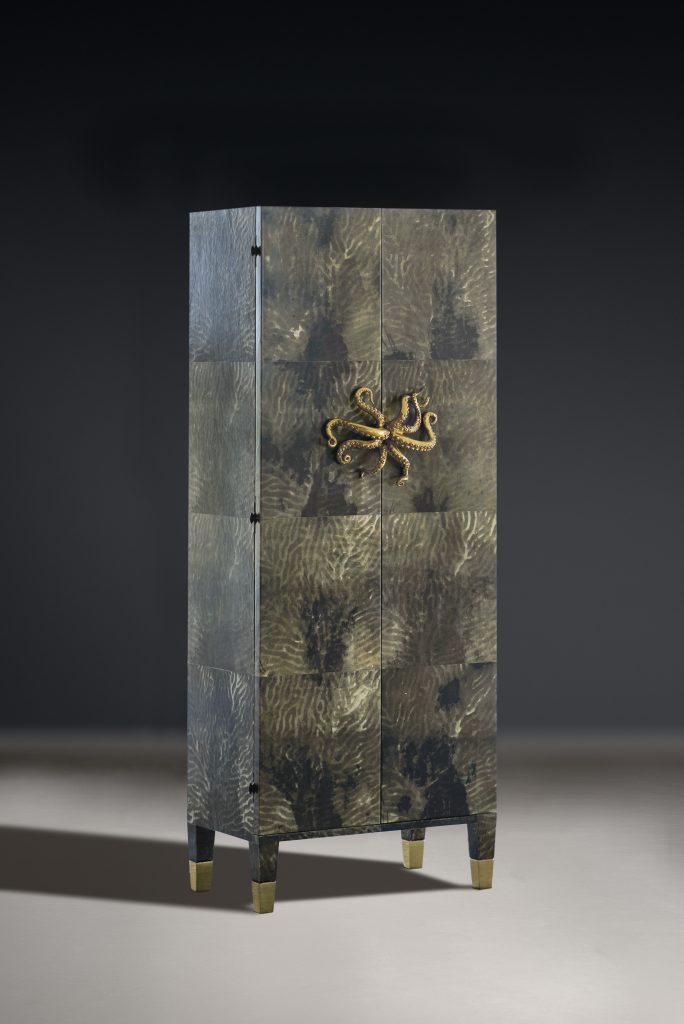

Ocean Armoire
“I wanted the octopus to emerge from the depths through a forest of light-scattered coral beneath the ocean,” Lamont says.
Lamont’s polished brass octopus sculpture that serves as hardware to this elegant, parchment covered armoire is instantly recognisable. It stands out as the purest representation of the natural and organic themes that run through all of Alexander’s work.
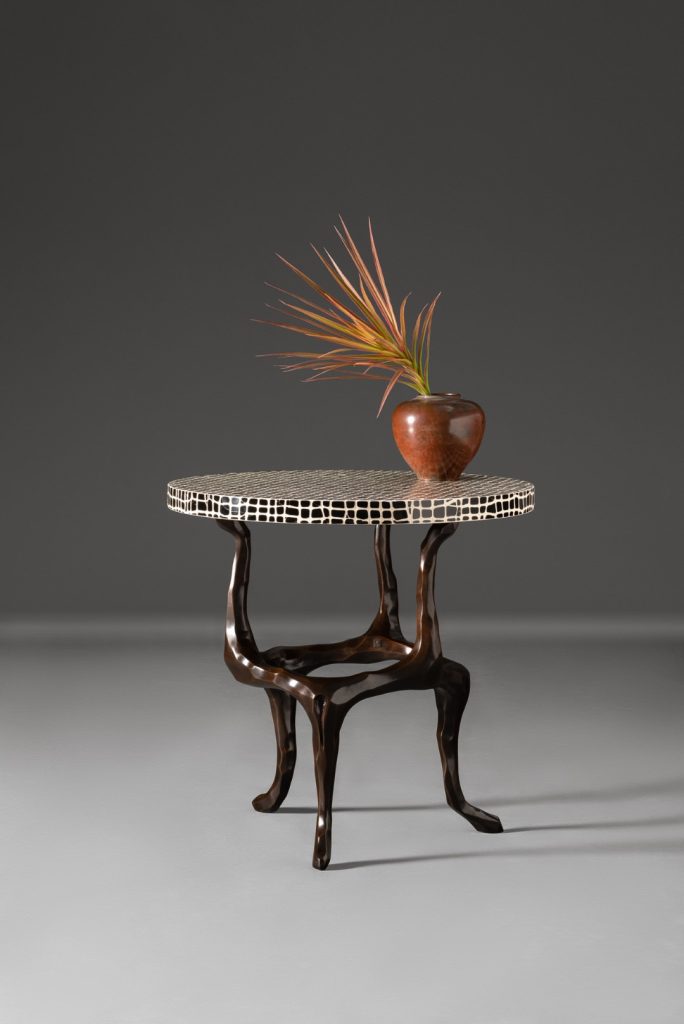

Amaranth Lamp Table
“I sculpted the base in wax many times searching for an elegant way to offset legs and arms that are darkly patinated to black bronze tones,” Lamont says.
The legs of the Amaranth Lamp Table take their inspiration from the traditional Chinese “leopard-foot” tables appearing to take on a creature-like life of their own. Supporting tabletops finished in some of Lamont’s favourite signature materials, this piece is as iconic for its sculptural presence as it is for the materials and craftsmanship that it embodies.
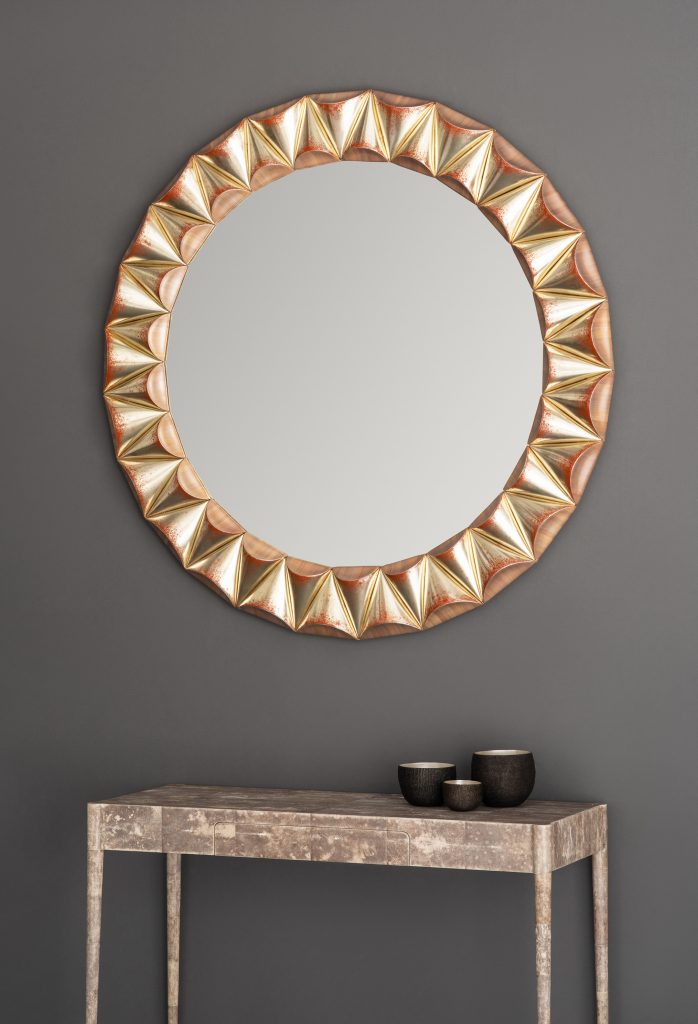

Magnificat Mirror
Inspired by Art Deco jewellery the Magnificat Mirror is “a bracelet of interlocking parts that reflect and play with light,” Lamont says.
It is composed of multiple lacquered, convex sections that have been lacquered and gilded, while the concave faces are covered with polished straw. This iconic piece has a complex internal construction, but hangs as a pure jewel-like expression of material and form.
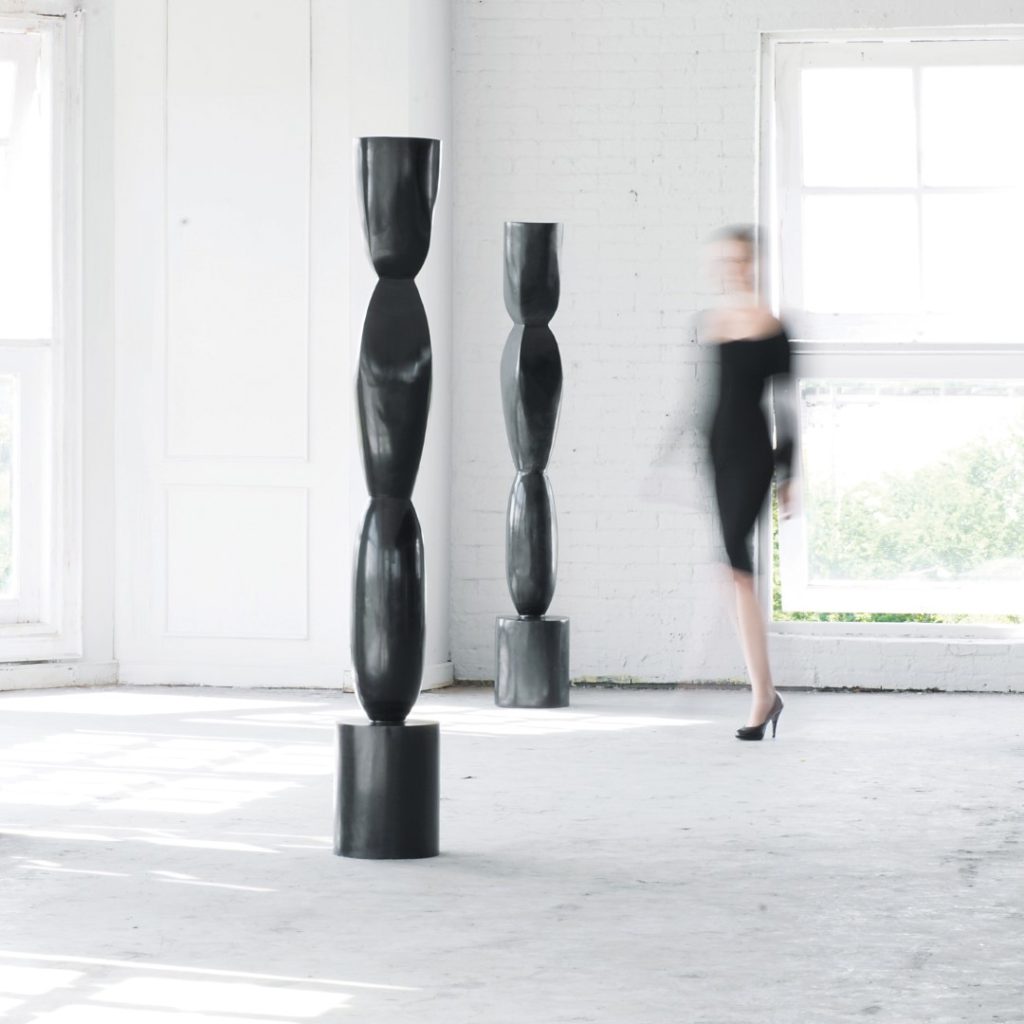

Carapace Uplight
Bronze is the first material that Lamont ever worked with. He was drawn to it for the sheer weight and impact of its presence and for its versatility as a sculptural and structural material. This most striking sculpted piece has a potent modernist form and creates a rich source of lighting.
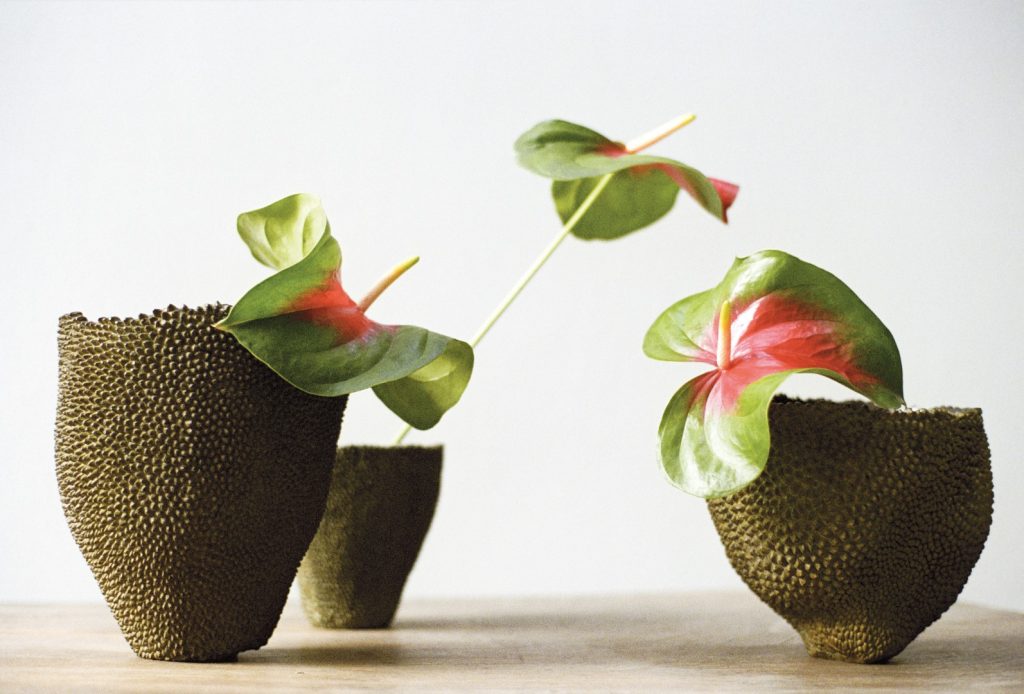

Pointillist Vessels
“In my search for textures that exude sculptural richness and tactile interest, nature is the biggest influence. We cannot improve upon the rough bark of a palm tree, or the forms of fruit and leaves. So I use them directly, letting the powerful varying nature of surfaces interact with lacquer and bronze and silver,” Lamont says.
Drawing from the texture and shape of the jack fruit, the Pointillist Vessels are powerfully organic pieces of sculpture.
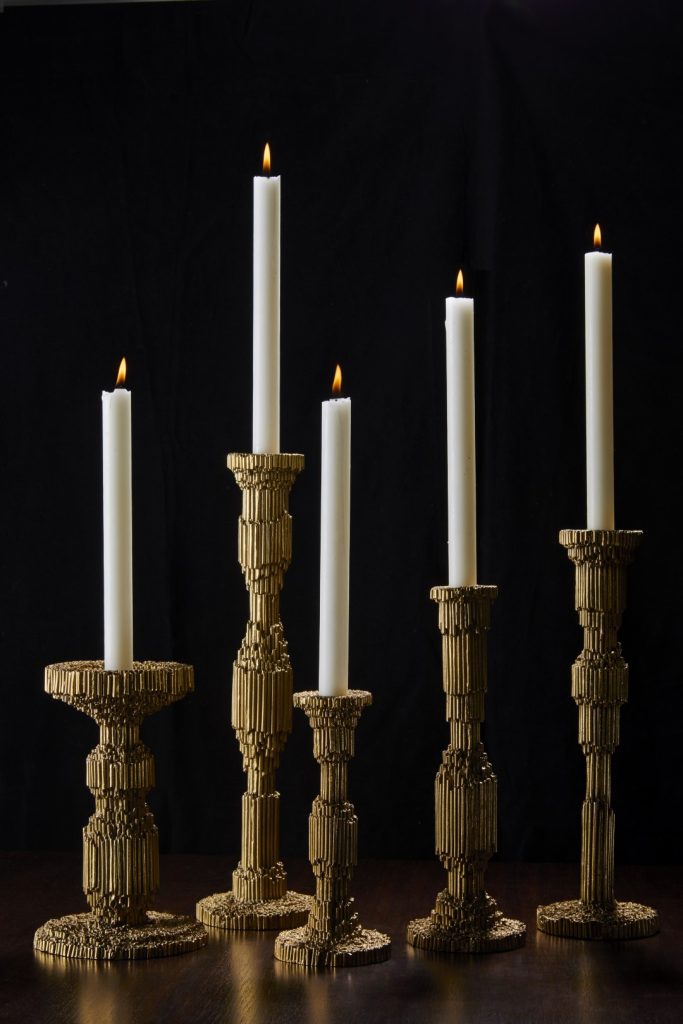

Paglia Candleholders
“I wanted to create a collection inspired by the shapes and contours of the thatched roofs found throughout England. The edges jut and overlap at the eaves where the birds live,” Lamont says.
The Paglia Candleholders are sculptural and organic and at the same time nuanced and elegant as lighting elements for the dining table that catch and animate the linear texture of their surface. The collection draws on Alexander’s memories of the place where he grew up and connects us with our own sense of memory and travel.
For further information: https://www.alexanderlamont.com







Leave a Reply